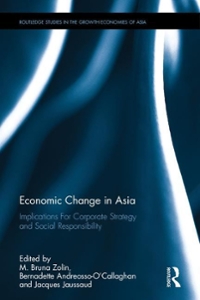Question
1). Use the data table to answer the question that follows. GDP $20 billion Household consumption $12 billion Government tax revenue $4 billion Government spending
1). Use the data table to answer the question that follows.
| GDP | $20 billion |
| Household consumption | $12 billion |
| Government tax revenue | $4 billion |
| Government spending | $5 billion |
| Net exports | $0 |
Based on the data table, what would be the national savings for this economy?
a)$1 billion
b)$3 billion
c)$4 billion
d) $5 billion
e)$7 billion
2)Eggs functioned as money in many agrarian economies in the 19th century. If a farmer compares his goat's worth at 1,500 eggs with his cow's worth of 4,500 eggs, which function of money is he using?
a) Store of wealth
b)Means of payment
c) Medium of exchange
d)Unit of account
e)Store of value
3) Use the given data table to answer the question below.
| Asset (billion $) | Liability (billion $) |
|---|---|
| Required reserves 800 | Primary deposits 8,000 |
| Loans 7,200 | |
| Total 8,000 | Total 8,000 |
What is the value of the money multiplier given the data above?
a) 8
b) 9
c)10
d)11
e)12
4)If $20,000 worth of mutual funds in an economy have lost their value, the M2 will ________ and the M1 will ________.
a) decrease; remain constant
b)increase; remain constant
c) remain constant; increase
d) increase; decrease
e) decrease; increase
5 Assume that there is $20,000 circulating in an economy and a bank only has a deposit of $1,000. The bank then loans out the entire excess reserve on the basis of the reserve requirement rate set at 20%. What is the amount of M1 in the economy?
a) $19,800
b) $20,800
c) $20,000
d)$19,200
e)$20,200
6) Which of the following scenarios correctly depicts the condition of real interest rates lying below the equilibrium level?
a)Surplus of loanable funds
b) Shortage of loanable funds
c)Can be both surplus and shortage
d)Constant stock of loanable funds
e)Insufficient information to determine
7) The central bank decides to increase the money supply by $500 million in the economy by decreasing the discount rate to 4%. Which of the following is true about the nominal interest rate in the economy?
a)The nominal interest rate remains unaffected.
b)The nominal interest rate will increase by the percentage change in the discount rate.
c)The nominal interest rate will fall.
d) The nominal interest rate will fall to create surplus in the money market.
e)The nominal interest rate will rise by the percentage change in the discount rate.
8) Which of the following holds true when the Fed conducts a contractionary open-market operation?
a) Nominal interest rate increases.
b)Aggregate demand increases.
c)Inflation increases.
d)Reserve-deposit ratio increases.
e) Money supply increases.
9)If the nominal interest rate increases, ceteris paribus, which of the following things will occur?
a) The demand for money will decrease.
b)The demand for money will increase.
c) The quantity demanded for money will decrease.
d)The supply of money will increase.
e)The supply of money will decrease.
10) In what situation would the expected real interest rate be negative?
a) The nominal interest rate is less than the expected inflation rate.
B) The nominal interest rate is greater than the real interest rate. c)The expected inflation rate is greater than the actual inflation rate.
d) The expected real interest is greater than the expected inflation rate.
e)The actual inflation rate is greater than the nominal interest rate.
Step by Step Solution
There are 3 Steps involved in it
Step: 1

Get Instant Access to Expert-Tailored Solutions
See step-by-step solutions with expert insights and AI powered tools for academic success
Step: 2

Step: 3

Ace Your Homework with AI
Get the answers you need in no time with our AI-driven, step-by-step assistance
Get Started


